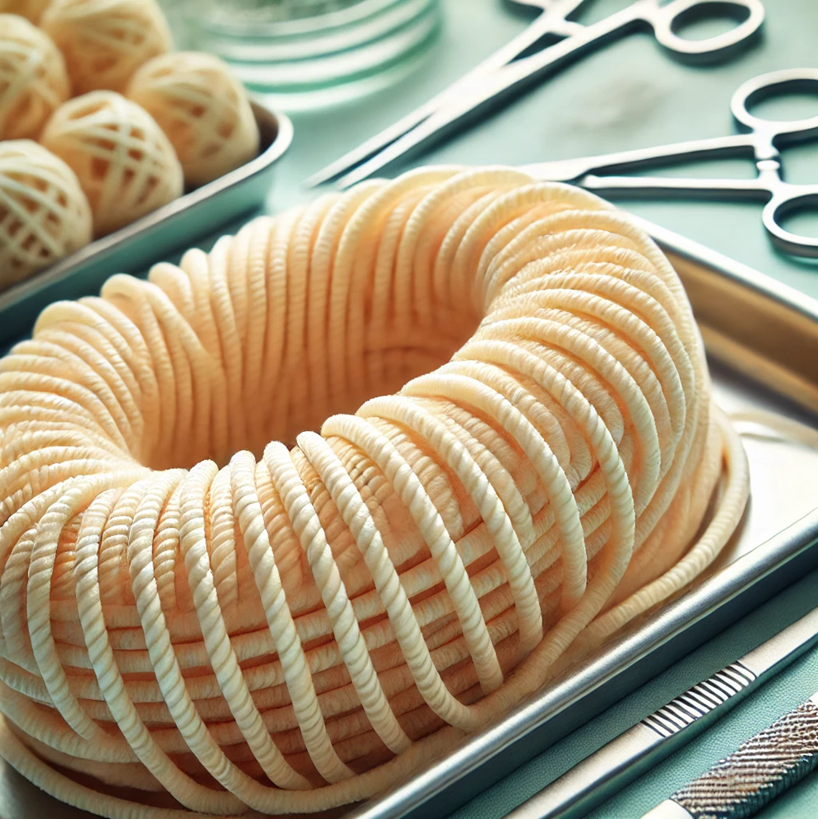In the field of surgery and wound care, sutures play a crucial role in ensuring proper healing and recovery. Among the various types of sutures available, catgut sutures hold a unique place due to their natural origin and longstanding use in medical practice. But what exactly is a catgut suture, and how does it work?
What is a Catgut Suture?
Catgut sutures are natural absorbable sutures made from purified collagen, typically derived from the intestines of sheep or cows. Despite the name, “catgut” does not involve cats. The term is believed to be derived from the word “kitgut” or “kit-string,” which referred to the strings of musical instruments made from animal intestines.
These sutures have been used for centuries, valued for their biocompatibility and ability to be absorbed by the body.
Characteristics of Catgut Sutures
- Absorbability: Catgut sutures are naturally absorbed by the body through enzymatic action, making them ideal for internal use where suture removal is impractical.
- Tensile Strength: The strength of catgut sutures diminishes over time as they are absorbed, which can be advantageous in specific applications.
- Biocompatibility: Derived from natural sources, they are less likely to cause severe reactions, although some individuals may experience mild inflammatory responses.
Types of Catgut Sutures
- Plain Catgut: These sutures are untreated and absorbed more rapidly, typically within 7-10 days. They are commonly used for superficial closures or tissues that heal quickly.
- Chromic Catgut: Treated with chromium salts, these sutures have increased strength and a slower absorption rate, lasting up to 21-28 days. They are ideal for tissues requiring longer support, such as fascia or muscle layers.
Applications in Medicine
Catgut sutures are widely used in:
- General Surgery: For internal suturing where the suture naturally dissolves.
- Gynecology and Obstetrics: Often used in cesarean sections or episiotomies.
- Ophthalmology: For delicate procedures involving the eye.
- Veterinary Medicine: For surgical closures in animals.
Advantages of Catgut Sutures
- Natural absorption eliminates the need for suture removal.
- Flexible and easy to handle during surgery.
- Effective for rapid-healing tissues.
- Cost-effective compared to synthetic alternatives.
Limitations and Considerations
While catgut sutures offer numerous benefits, they are not without drawbacks:
- Allergic Reactions: Rare but possible in some individuals.
- Variable Absorption Rate: Dependent on tissue type and patient-specific factors.
- Reduced Strength Over Time: May not be suitable for long-term tissue support.
- Infection Risk: As a natural material, it is more susceptible to microbial contamination if not handled properly.
The Shift to Modern Alternatives
Although catgut sutures are still in use, advancements in medical science have led to the development of synthetic absorbable sutures like polyglycolic acid (PGA) and polydioxanone (PDO). These alternatives offer improved strength, predictability, and reduced risk of adverse reactions.
Conclusion
Catgut sutures remain a remarkable innovation in medical history, bridging tradition with functionality. While modern alternatives have gained popularity, catgut sutures continue to serve as a reliable choice in specific surgical scenarios. Their natural origin and versatility underscore their lasting significance in the world of medicine.
Whether you’re a medical professional, a student, or simply curious about surgical advancements, understanding catgut sutures provides insight into the fascinating intersection of biology and technology.



Leave a Reply